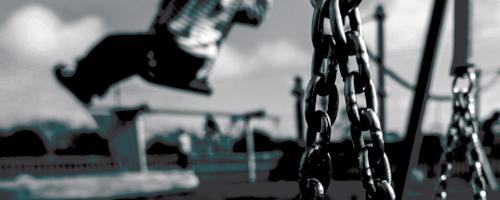RECENT CHANGES IN OUR LAWS
The basic definition of child abuse by the Federal Child Abuse Prevention and Treatment Act(CAPTA) is any recent act or failure to act on the part of a parent or caretaker which results in death, serious physical or emotional harm, sexual abuse or exploitation to a child under 18 years of age. It also includes an act or failure to act which presents an imminent risk of serious harm. There are four basic forms of child abuse-neglect, physical, sexual and emotional/mental, with neglect being by far the most frequent one. Childhood abuse is an important cause of both death and serious injury leading to serious physical and mental health problems that can last into adulthood. Each state varies in their specific definitions and their civil and criminal statutes, but they must meet the minimum federal standards above.
Child Protective Services(CPS), where suspected child abuse is reported locally, investigate more than 2 million reports of suspected child abuse/maltreatment nationally each year, 18% of which are suspicions for physical abuse. More than 650,000 of these cases are substantiated (much higher than PA. rate of 13%) upon investigation with more than 1500 cases of death annually in the US. The vast majority of these deaths (80%) occur in children younger than four years of age. Girls are slightly more likely to be the victims and parents, particularly mothers, are by far (59% in PA.) the most common perpetrators. Racial and ethnic minority children are more frequently child abuse victims than white children. It ‘s hard to determine from the available data sources if child abuse is increasing or declining in recent years, based on various reporting agencies. Adult reports of childhood experiences may be a better marker and studies show that nearly 18% of adults have reported having been physically abused during childhood. What is clear, however, is that child physical abuse that is identified, reported to CPS and investigated likely represents only a small percentage of childhood abuse actually occurring.
Pennsylvania’s definitions of child abuse have changed and expanded due to recent amendments to our Child Protective Services Law, effective December 31, 2014. The key changes include the requirement that acts or failure to act be committed intentionally, knowingly or recklessly. Child abuse now includes behaviors that result in exposing children to potentially harmful medical evaluations and treatments. There is now a lower threshold for serious mental injury to include causing or substantially contributing to the injury through any act(s) or failure(s) to act.
Imminent risk has been expanded and clarified to include such acts as kicking/biting/burning/stabbing/cutting in a manner that endangers a child; unreasonable restraint or confinement of a child; forcefully shaking, slapping or striking a child under one year of age; interfering with a child’s breathing and leaving a child unsupervised with someone who is required to register as a sexual offender, sexually violent predator or sexually violent delinquent.
The definition of a perpetrator, one who committed the abuse, has been expanded to include school personnel and other child care providers as well as students-anyone with direct or regular contact with a child through a wide variety of programs and activities. This goes substantially beyond parents, spouses or former spouses of parents, and various individuals 14 years of age and older who reside in the same house of the child or have a responsibility in the child’s care and welfare.
In addition to the 2014 amendments to our state law, new bills have been passed more recently to help streamline and clarify the reporting process in our state, all triggered by the Sandusky case. There are permissive reporters, who can report a case of suspected abuse but are not required to act or intervene. Reasonable cause to suspect is the legal standard for reporting to the local or county agency or law enforcement. Mandated reporters are required to report suspected cases when he or she has reasonable cause to suspect child abuse. The definition of a mandated reporter has been expanded and includes anyone who comes into contact with a child through employment, occupation, and practice of a profession or through a regularly scheduled program, service or activity. A mandated reporter is either directly involved or responsible for some aspect of the child’s care, guidance, training or supervision or is affiliated with an agency, organization, school, church or religious organization or other entity that does the same. Confidential communication made to an ordained member of the clergy or an attorney are exceptions as long as they meet the requirements of the law.
Reporters are exempted from civil and criminal liability as long as they report in good faith and cooperate with the investigation. In addition, their identities are protected in most situations. In contrast, a mandated reporter who willfully fails to report a suspected case of child abuse can be criminally prosecuted.
In summary, we all have a role to play in helping to identify children who are abused or are at risk. The injuries and harm can be devastating and impair the lives of victims for many years. My experience in practice and as an expert in these cases also indicate that caution is needed in being overly zealous to prosecute alleged perpetrators without complete and comprehensive evaluations and investigations. An innocent person can have their life forever changed.
References: 1Child Abuse Identification and Reporting: PA. Requirement for Physicians-Alice Yick Flanagan, PhD, MSW-NetCE publication –CA. publication-2016 2Pennsylvania Family Support Alliance-Abuse and Neglect Definition-www.pa-fsa.org. 3The Evaluation of Suspected Child Abuse—Cindy W. Christian, MD-Committee on Child Abuse and Neglect-Pediatrics-September 1, 2015.






















